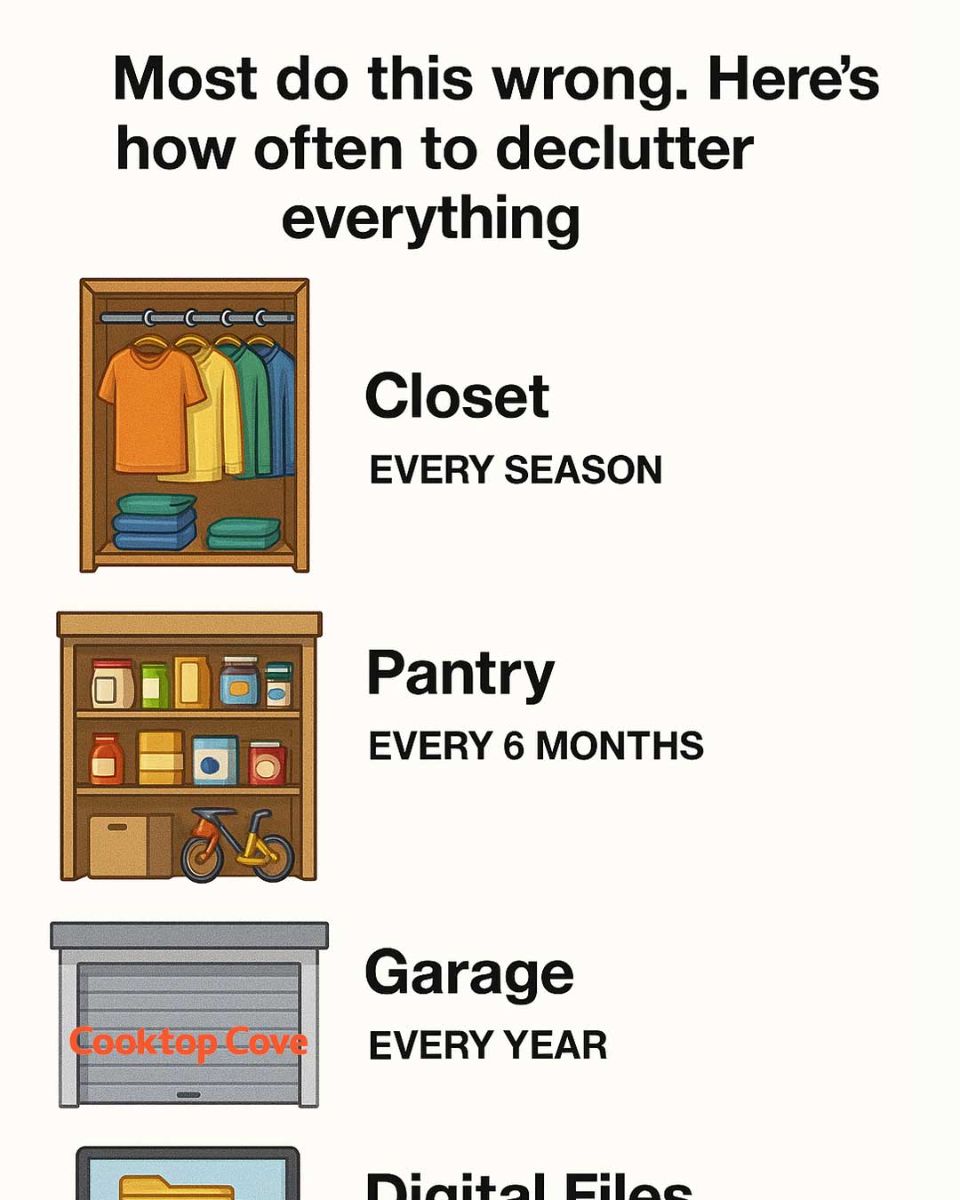In today’s fast-moving world, clutter has a sneaky way of building up and turning our homes into chaotic spaces. Whether it’s a packed closet, a messy pantry, or a digital overload, too much stuff can lead to stress, anxiety, and a general sense of being overwhelmed. But decluttering isn’t just about having a clean house—it’s about creating a calm, functional space where you feel at ease. When done right and regularly, decluttering can truly transform your home and your mindset.

Let’s be real—most people get decluttering wrong. They either treat it like a one-time fix or only focus on what’s visible, ignoring the hidden areas like closets and drawers where clutter quietly piles up. The truth is, decluttering should be an ongoing process. According to a survey by the National Association of Professional Organizers, over half of Americans feel overwhelmed by clutter, and nearly 80% don’t know what to do with it. That’s why creating a routine for decluttering each part of your home is key to maintaining peace and order.
Decluttering Your Closet: Twice a Year Is the Sweet Spot
Closets are prime real estate for clutter. Clothes we no longer wear, items that don’t fit, and fashion trends we’ve outgrown—these things add up fast. Experts suggest tackling your closet at least twice a year, ideally during seasonal changes. This is a great time to switch out wardrobes and say goodbye to what no longer serves you.
Start by emptying your closet and sorting items into three piles: keep, donate, and toss. Be honest about what you actually wear. Haven’t worn it in the past year? Let it go. For a helpful hack, try the “hanger trick”—turn all your hangers backward at the start of the season. As you wear each item, return it with the hanger facing the right way. At the end of the season, anything still on a backward hanger is a candidate for donation.
Decluttering the Pantry: Every Six Months
Your pantry can quickly become a black hole for expired snacks and forgotten cans. A biannual clean-out can make a huge difference. Pull everything out, check expiration dates, and toss anything outdated or no longer wanted. Then, group similar items together—grains, snacks, canned goods—and use clear, labeled containers to store them. This not only makes it easier to find what you need, but it also helps you avoid overbuying.
Want to get fancy? TikTok and Instagram are full of viral organization tips, like using matching storage jars and adding labels with expiration dates. Add tiered shelves or a lazy Susan to get the most out of your space and make everything easy to grab.
Garage Decluttering: Once a Year
The garage is where unwanted items go to hide. Without regular cleanouts, it becomes a dumping ground. Once a year, do a full sweep: categorize everything into keep, donate, or toss. If something hasn’t been used in a year, it’s time to let it go.
Install shelves or pegboards for tools and use labeled bins for seasonal gear like holiday decorations or sports equipment. A well-organized garage can free up valuable space and reduce the stress of searching through clutter.
Digital Decluttering: Once a Month
Clutter isn’t just physical anymore. Your phone, laptop, and inbox can also get out of control. Set aside time once a month to unsubscribe from emails you don’t read, delete unnecessary files, and organize digital folders. Delete apps you don’t use, and back up important data to the cloud or an external drive. Keeping your digital space tidy helps your devices run smoother and reduces mental clutter.
The Mental Health Boost of Decluttering
Decluttering isn’t just good for your home—it’s great for your brain, too. Studies show that clutter can raise cortisol levels, leading to stress and reduced focus. On the flip side, a tidy space can improve your mood, boost productivity, and even help you sleep better. When your environment feels under control, your mind often follows.
How to Keep Your Home Clutter-Free
Keeping a tidy home isn’t about one big purge—it’s about small, consistent habits. Try the “one in, one out” rule: for every new item you bring in, donate or toss one. Set up daily routines like tidying up before bed and keeping designated spots for keys, mail, and other daily-use items.
Scheduling regular decluttering sessions—monthly for digital files, semi-annually for closets and pantries, annually for the garage—helps you stay ahead of the mess. Over time, it becomes second nature.
What Not to Do When Decluttering
Many people make the mistake of doing too much at once. It’s easy to get burned out or discouraged when the process feels overwhelming. Instead, tackle one room or category at a time and set realistic goals. Also, don’t buy new storage containers before decluttering. It’s tempting, but unnecessary bins can become clutter themselves.
And avoid keeping things out of guilt or “just in case.” If something doesn’t serve a real purpose in your life anymore, it’s okay to let it go.
In the end, decluttering is about creating space—not just physically, but mentally and emotionally. When your home is more organized, your life feels lighter, more focused, and more manageable. It’s not about being perfect; it’s about making your space work better for you, one thoughtful decision at a time.





